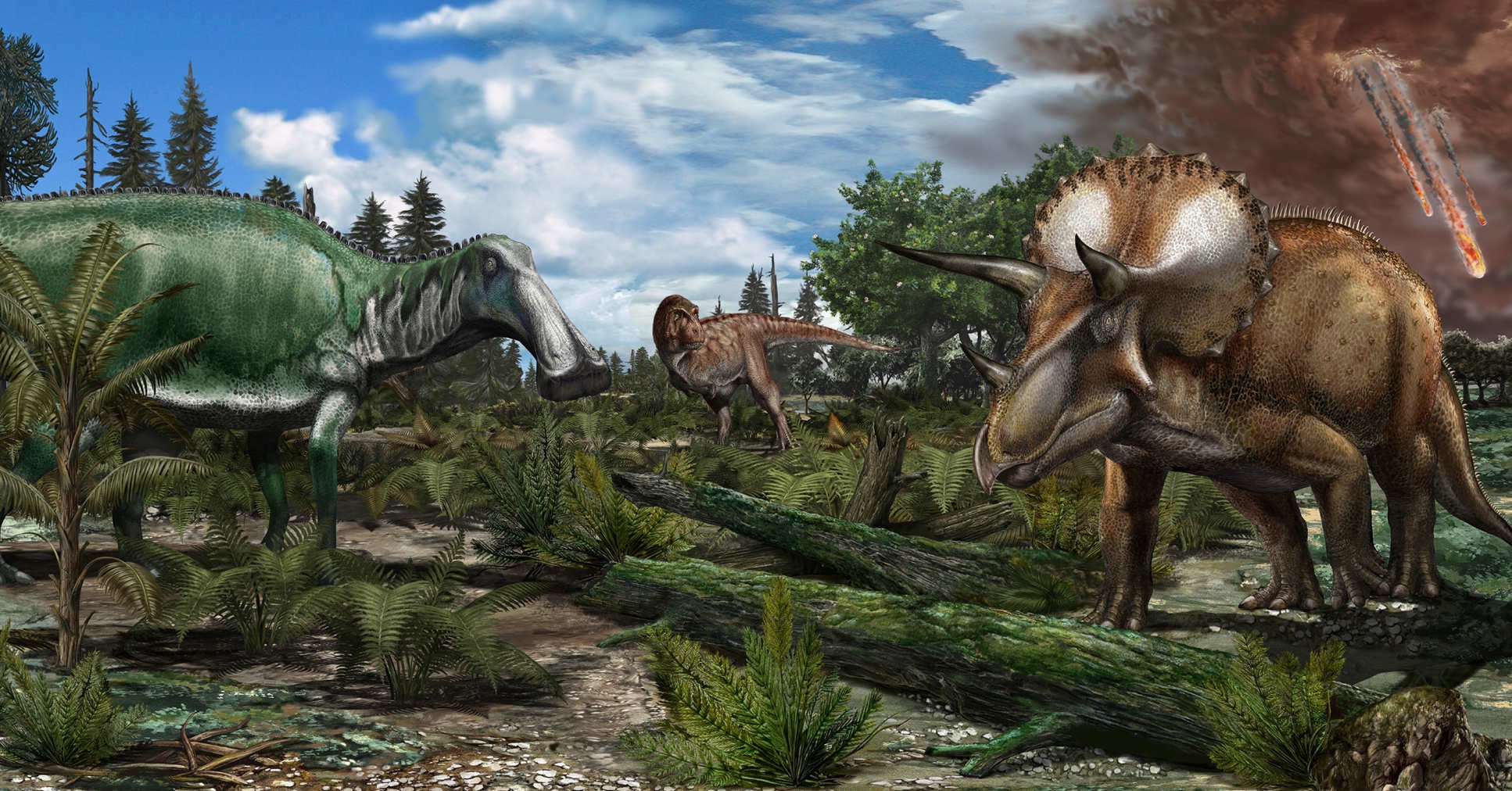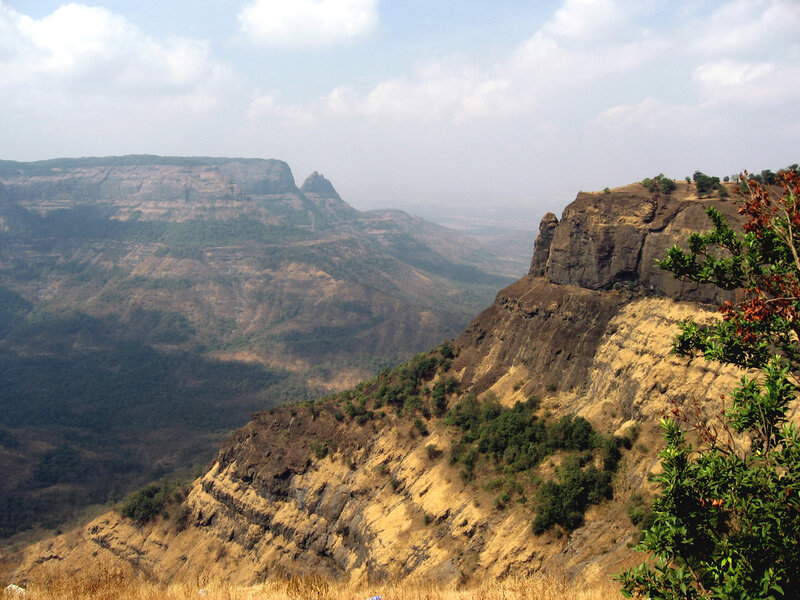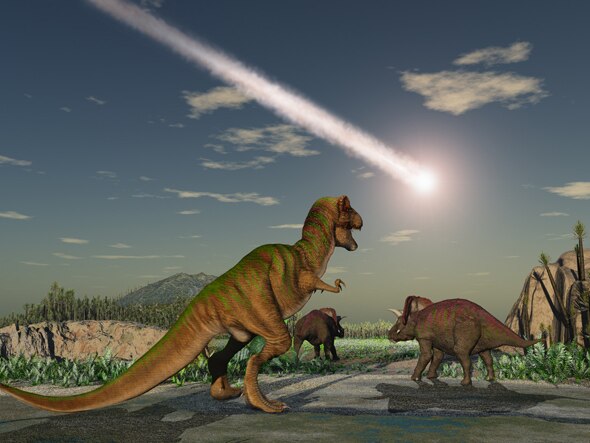Create a free profile to get unlimited access to exclusive videos, sweepstakes, and more!
What killed the dinosaurs? Astronomy and geology.

It’s really looking like a combination of astronomy and geology is what wiped out the dinosaurs.
Ever since the first dinosaur bones were found, the biggest mystery about them is, simply, what happened to them? They ruled the Earth, yet they’re gone now (well, to be pedantic, the non-avian ones are gone; many avian ones evolved to become birds today). They were everywhere: on land, in the sea, and in the air. So what could have wiped them out?
In the 1980s scientists came up with the idea that a giant asteroid impact did the deed. It seemed silly at first, but evidence mounted, including finding a gigantic crater off the coast of the Yucatan Peninsula in Mexico — called Chicxulub Crater, the size and age of which matched data on when and what was needed to kill off the dinosaurs. The impact, the thinking goes, did so much ecological damage, including throwing so much dust and water in the atmosphere, that it radically changed the climate and did it so rapidly the large animals couldn’t adapt quickly enough.
Still, some argued against it; some of the details didn’t fit. Geologists noted that around that same time, about 66 million years ago, a volcanic eruption in India may have been the cause. This eruption was vast… and I do mean vast: The Deccan Traps, as the region is called, covers half a million square kilometers and was ongoing for something like a million years. A million-year-long eruption! No wonder geologists thought they had the smoking gun. It too would have caused catastrophic climate change, enough to have global and extinction-level effects.
So which was it, a sudden asteroid or an Energizer volcano? Yes.
It’s been looking more and more like both. In fact, recent work has shown that the volcanic output increased not long after the asteroid impact, strongly suggesting the two were related. While the Deccan Traps were erupting before the impact, the asteroid slamming into the crust may have greased the wheels, literally opening up cracks on the other side of the planet, allowing the lava to pour out more freely.
This research is pretty new, and new data are still coming in. And, in fact, just this week a couple of news stories both point toward a one-two asteroid-volcano punch. The stories are very different, but they overlap in a very interesting way: They both point toward the asteroid being the catalyst for the eruption. One involves geology, but the other is based on biology.
Let’s look at the second one first. A few years back, scientists looking over the fossil record from the late Cretaceous Period, the last in the Reign of the Dinosaurs (after the Triassic and Jurassic), found indications that the dinosaurs were in decline for millions of years before the Chicxulub impact. The diversity of species seemed to be dropping long before the impact, perhaps due to some slower climactic change. However, this research wasn’t conclusive.
New research, however, using mathematical models of dinosaur species distributions in North America, indicate the beasts were doing just fine right up until that 10-kilometer wide asteroid plummeted into the Gulf of Mexico. This new method looks more carefully at the fossil record to account for changes in the number of fossils found in various places due to different conditions. That is, in some places fossilization occurs more easily than in others, and that needs to be included in the models.
What the scientists found is that dinosaurs were not only doing fine, their numbers may have even been increasing slightly right up to the end.
But that’s weird. The Deccan Traps were known to be erupting before the asteroid impact. It was thought that this had the effect of changing the environment enough that dinosaurs were starting to die off, softening them up for the devastating conditions after the asteroid impact and increase in volcanic output, which finally did them in.
However, we now turn to the other news story, this time from geologists. They looked at the rocks in the Deccan Traps, solidified basaltic lava spewed out over the course of a thousand millennia. They were able to more accurately get ages of these rocks spread out in different locations, and from them determine how active the Traps were over time.
While it was known volcanic activity perked up after the asteroid impact, the new work found that things really got a kick in the basalt after the asteroid whacked the Earth: As much as 75% of the lava released by the volcano occurred after the impact.
This is very different than what was found before; it was originally thought that the majority came out before the impact. This new data, which covers more territory more accurately, show this isn’t the case.
But that fits with biology news! If the impact opened the faucet on the Deccan Traps, with most of the eruptions occurring after, then the volcano’s effects on the environment weren’t as bad as initially thought before the impact. That’s why the dinosaurs were doing just fine, and not in gradual decline.
The volcano was big, sure, but spread out over so much time that it wasn’t as devastating as it could be. Then the asteroid hit, which was bad enough, but it also flipped the volume knob on the volcano up to 11. The dinosaurs didn’t have a chance.
Incidentally, the new research also shows the sudden increase in the volcanic output happened closer to the impact time than thought before too; they date it to 30,000 years after the impact. That’s about as accurate as the measurements get, so within the uncertainty that’s essentially simultaneous.
In a sense this makes me happy. I mean, holy crap, this whole thing is terrifying, but in a way it’s reassuring. Sure, we’re talking about the impact of an asteroid bigger than Mt. Everest at a speed twenty times that of a rifle bullet, and a volcano that erupted for ten thousand centuries. But it took both of them to take down the dinosaurs. Either one on its own may not have been enough.
But it’s still a cautionary tale. The takeaway is not that it took two colossal disasters to kill off the mighty dinosaurs; it’s that it took sudden ones to do so.
The climate, some people who deny science are fond of saying, has changed throughout history. That’s true, but that’s not the point. It’s the speed at which it changes that’s important, because species need to adapt. Dinosaurs couldn’t adapt to the radical environmental impact of those natural disasters.
In our case the current climate change is an unnatural disaster, and it’s happening incredibly rapidly. We need to admit that and make big and fundamental changes in our own behavior. I would very much prefer that, in 50 million years, some other species isn’t looking at our dusty bones in their museum and wondering what sequence of events wiped us out.




























